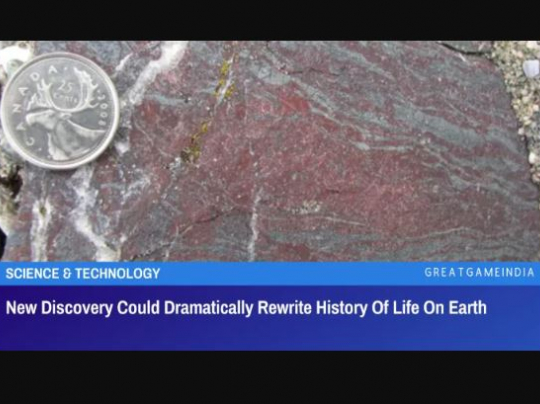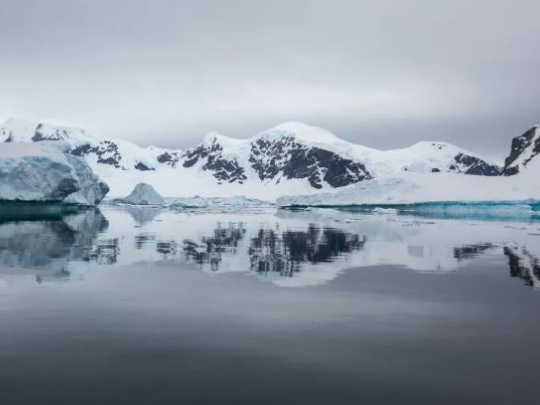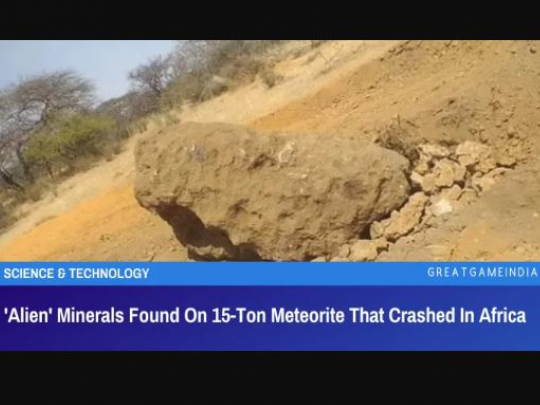New Discovery Could Dramatically Rewrite History Of Life On Earth

For decades, researchers have speculated that life may have originated on Earth near ocean vents. But this new discovery could dramatically rewrite the history of life on Earth.
According to a new study, researchers believe they have discovered the earliest fossils on Earth, tracing its roots back 3.75 billion years and possibly as far as 4.2 billion years, in rocks discovered in a remote location in northern Québec, Canada, reports Vice.
If the formations within those rocks are biological in nature, this would press the timeline of life on this planet back by at least 300 million years, and this could display that the oldest known organisms are barely older than Earth itself. Such a discovery would have far-reaching ramifications for comprehending the origins of life on Earth, as well as for the quest for alien beings on other planets.
Dominic Papineau, an associate professor of geochemistry and astrobiology at University College London, gathered these presumptive microbial fossils during a 2008 excursion to Québec’s Nuvvuagittuq Supracrustal Belt, a structure that encompasses some of the Earth’s oldest rocks. Papineau and his colleagues published their findings in Nature in 2017, sparking a debate about whether the tubes and filaments preserved in the rock formations were the outcome of biological or geological processes.
Papineau and his colleagues have worked to strengthen the case that the enticing structures really are early lifeforms which might have flourished near hydrothermal vents in Earth’s ancient oceans in the years since. In a study published on Wednesday in Science Advances, the researchers report these “unprecedented” new findings, which could reveal “a diverse microbial ecosystem on the primordial Earth that may be common on other planetary bodies, including Mars.”
“Overall, it’s very exciting because not only do we develop a scientific approach with multiple independent lines of evidence to strengthen the biological origin, we also dismiss the known abiotic reactions,” Papineau said in a call.
“These microfossils might actually exist on other ancient planetary surfaces because if the origin of life takes such a short time to develop, and you have this level of complexity, then that brings up a lot of new philosophical questions about the probability that life might have arisen and left these kinds of imprints behind,” he added. “It creates a lot of new opportunities to push back the clock for the origin of life and to search specifically for these kinds of things on other planets.”
Watch the video below:
Following skepticism about their 2017 study’s assertions, Papineau and his colleagues used a slew of modern tactics to shed light on the nature of the strange structures in Canadian rock.
While the previous study was based on a thin slice of the rock about just the width of tracing paper, the recent study characterizes a denser sample that revealed, for the first time, a tree-like stem with parallel branches on one side that measures to almost a centimeter across, and several contorted spheres accumulated in intricate clusters. This centimeter scale may not appear large to us billions of years later, but it is significant for a prospective bacterial community that may have existed during our planet’s infancy.
A few of the patterns might have been created by geological interactions, but the stem formation is tough to explain with abiotic mechanisms, according to the team. Furthermore, the overarching picture interred in the rock is suggestive of iron-eating microbes found in modern hydrothermal vent systems.
“We don’t have any DNA, of course, that survived these geological timescales, with the heat and pressure that the rock has suffered,” Papineau said. “But what we can say, on the basis of morphology, is that these microfossils resemble those that are made by the modern microbacterium called Mariprofundus ferrooxydans.”
For decades, researchers have speculated that life may have originated on Earth near such ocean vents, which provide energy sources such as iron, carbon, hydrogen, and oxygen to any emerging lifeforms.
Because of the possibility of these vents in the subsurface oceans of Jupiter’s moon Europa or Saturn’s moon Enceladus, such worlds have become exhilarating objectives for the search for alien life. Similarly, proof that comparable environments did exist on Mars billions of years ago elevates the potential that microfossils will be discovered on the red planet one day, possibly by NASA’s Perseverance rover, which is entrusted with gathering samples that may contain traces of past Martian life.
As a result, the presumed microfossils from Québec could provide a window into the distant past of our planet and others, while also revealing a new roadmap for identifying life on alien worlds.
“I’m clearly handling some precious stuff,” Papineau concluded. “They are relics of the very distant past. So in a way, it is very humbling because I’m the first human being, the first animal, the first lifeform on this planet, to see these things and to realize what they are.”
- Source : GreatGameIndia


















